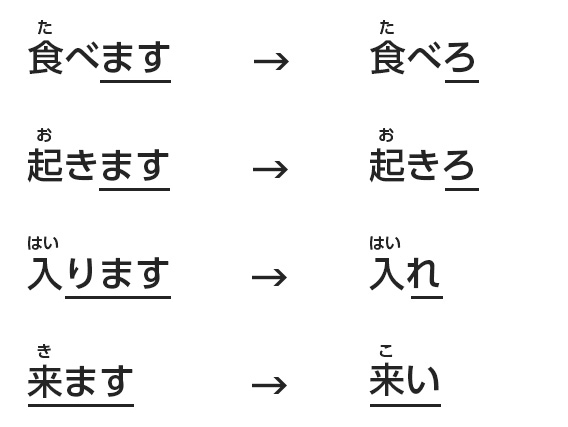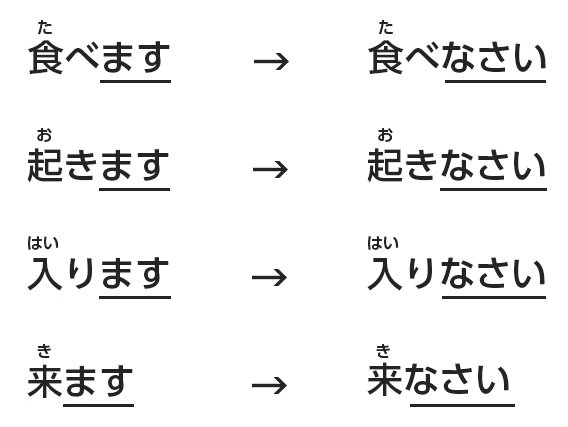Teach Us, Teacher
Command form of verbs (Lesson 25)
This is how to make the command form from the MASU form of verbs. First, for the verbs that end with the vowel "E" in the syllable just before MASU, you change MASU to RO. For example, "to eat," TABEMASU, becomes TABERO (Eat!). Next, for the verbs that end with the vowel "I" in the syllable just before MASU, there are two patterns. One pattern is to change MASU to RO. "To get up," OKIMASU, becomes OKIRO (Get up!). The other pattern is you drop MASU and change the vowel in the syllable just before it to "E." "To get under" or "to enter," HAIRIMASU, a verb in today's skit, follows this pattern. It becomes HAIRE (Get under _! or Enter!).
Next, for the verbs that end with the vowel "I" in the syllable just before MASU, there are two patterns. One pattern is to change MASU to RO. "To get up," OKIMASU, becomes OKIRO (Get up!). The other pattern is you drop MASU and change the vowel in the syllable just before it to "E." "To get under" or "to enter," HAIRIMASU, a verb in today's skit, follows this pattern. It becomes HAIRE (Get under _! or Enter!). But "to come," KIMASU, is an exception. It becomes KOI (Come!). The command form is strong in its imperative meaning.
The command form is used mainly by men, when they tell close friends or children to do something. Women usually don't use it.
For a polite expression of command that both men and women can use, you can drop MASU in the MASU form of verbs, and say NASAI in its place.
 "To eat," TABEMASU, becomes TABENASAI, (Please eat). And "To get under or to enter," HAIRIMASU, becomes HAIRINASAI (Please get under, or Please enter).
"To eat," TABEMASU, becomes TABENASAI, (Please eat). And "To get under or to enter," HAIRIMASU, becomes HAIRINASAI (Please get under, or Please enter).Please access "Leaning Tools" page.